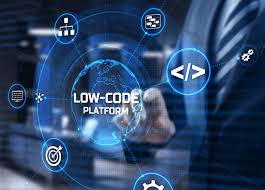Meta title: What Is Enterprise Innovation in IT? Definition, Types, Frameworks & Examples | Singleclic
Meta description (150–160 chars): Learn what enterprise innovation in IT means, the 4 types of innovation, proven frameworks, and how Singleclic helps you turn ideas into measurable value.
Introduction
Enterprise innovation in IT is the structured process of turning new ideas, technologies, and delivery models into measurable business value—faster growth, lower cost-to-serve, stronger security, and better customer experiences. For organizations across the MENA region, innovation is no longer “nice to have”; it’s the operating system for digital competitiveness.
At Singleclic (est. 2013), we help enterprises design, build, and scale innovation with Low-Code, ERP, CRM, cloud-native architectures, robust networking, and cybersecurity—all integrated and production-ready.
What Is Innovation in Enterprise IT? (Definition)
Enterprise innovation in IT is the end-to-end capability to discover, prioritize, deliver, and scale technology-powered improvements that create business outcomes. It blends:
- Strategy: Clear outcomes tied to OKRs (revenue, efficiency, NPS, risk reduction).
- Process: Agile/DevOps delivery, product thinking, and continuous iteration.
- Technology: Modern stacks—cloud, data, AI, automation, and secure networks.
- Governance: Architecture standards, security by design, and value tracking.
In short: innovation = ideas × (delivery velocity) × (security & reliability) × (adoption).
The 4 Types of Innovation (Explained With IT Examples)
1) Incremental Innovation
Small improvements to existing systems that compound over time.
Examples: Page-speed optimization for your e-commerce, automating manual ERP postings, or improving CRM lead routing.
2) Sustaining (Evolutionary) Innovation
Enhancements that keep the core product/service competitive.
Examples: Migrating on-prem ERP modules to cloud, adding role-based access, upgrading network topology for higher availability.
3) Disruptive Innovation
New capabilities that change how value is delivered to customers.
Examples: Low-code apps that digitize field operations in weeks, AI chat to automate Level-1 support, headless commerce with composable services.
4) Business-Model Innovation
Shifts in how the enterprise captures value.
Examples: Usage-based pricing enabled by telemetry, B2B self-service portals integrated with ERP, or data-as-a-service offerings.
Why Enterprise Innovation Matters (Key Benefits)
- Speed to market: Launch new digital services in weeks, not months.
- Operational efficiency: Integrate ERP–CRM–logistics to cut rework and manual touchpoints.
- Customer experience: Real-time personalization, faster response times, reliable SLAs.
- Risk reduction: Security baselines, identity controls, and proactive monitoring.
- Scalability: Cloud-native designs that handle seasonal or regional growth.
Proven Framework: From Idea to Impact
H2: The Enterprise Innovation Lifecycle
- Discover & Prioritize
- Map pains/opportunities; tie to KPIs/OKRs.
- Build a value hypothesis and a lean business case.
- Architect & Secure
- Select target architecture (microservices vs. modular monolith).
- Define security controls (IAM, zero-trust, data protection, backup DR).
- Deliver Fast (Agile + DevOps)
- Two-week sprints, CI/CD pipelines, automated testing.
- Feature flags and canary releases to reduce risk.
- Measure & Scale
- Track value (cost per ticket, order cycle time, conversion rate).
- Standardize patterns; create reusable components; expand regionally.
Enablers: The IT Capabilities That Power Innovation
Low-Code Application Development
Ship internal tools and mobile apps rapidly with governance, audit logs, and SSO.
ERP & CRM Integration
Unify finance, operations, and sales for end-to-end visibility: orders, stock, billing, and support on one backbone.
Cloud & Cloud-Native
Containerized services, autoscaling, and managed databases to maximize uptime and performance.
Networking & Infrastructure
High-availability designs, SD-WAN, and hardened network zones for secure, fast connectivity.
Cybersecurity by Design
Risk assessments, IAM, SIEM/SOC integration, and continuous compliance—built into every release.
Governance Without Slowdown
- Architecture standards: Reference templates for data, APIs, and event streams.
- Security gates in CI/CD: Static/dynamic scans, secrets management.
- FinOps: Cost guardrails; tag-based showback/chargeback.
- Portfolio management: A transparent roadmap with ROI tracking and stage gates.
Real-World Example (MENA Scenario)
A regional distributor modernizes its order-to-cash:
- Challenge: Slow order entry, stockouts, and siloed CRM/ERP.
- Solution: Low-code order app integrated to ERP; real-time inventory; role-based approvals; automated notifications.
- Outcomes: 30–50% faster order processing, fewer errors, happier customers, and clear audit trails for compliance.
What Does “Enterprise & Innovation” Mean Together?
It’s the fusion of scale and agility: large organizations adopting start-up speed without sacrificing security, compliance, and reliability. Think product thinking, platform teams, and guardrails—not gatekeepers.
What Are Innovative Enterprises?
Organizations that consistently turn ideas into value at scale. Hallmarks include:
- Clear outcome-driven roadmaps
- Cross-functional teams (IT × business)
- Reusable platforms and APIs
- Continuous measurement and learning
- Strong security posture and resilience
How Singleclic Accelerates Enterprise Innovation
Since 2013, we’ve delivered integrated solutions across the Arab world:
- Software Development & Low-Code: Rapid apps with governance and SSO
- ERP & CRM: Implementation, integration, and workflow automation
- Networking & Infrastructure: Design, deployment, and 24/7 support
- Cybersecurity: Threat modeling, endpoint protection, SIEM/SOC integrations
- Hosting & Cloud Native: High-availability hosting and cloud modernization
Let’s co-create your innovation roadmap—from quick wins to enterprise-wide scale.
FAQ — People Also Ask (Short, Search-Friendly Answers)
What is innovation in enterprise?
Innovation in enterprise is a repeatable capability to deliver new or improved digital products, processes, and business models that produce measurable outcomes—faster, safer, and at lower cost.
What are the 4 types of innovation?
Incremental, sustaining (evolutionary), disruptive, and business-model innovation. Each type can be enabled by IT through automation, data, AI, cloud, and secure integration.
What does enterprise and innovation mean?
Together they mean scalable agility: big-company resilience with start-up speed, enabled by modern IT, robust governance, and a culture of experimentation.
What are innovative enterprises?
Enterprises that systematize idea-to-impact with platforms, APIs, product teams, and continuous value tracking—so innovation becomes business-as-usual.
Call to Action (CTA)
Ready to turn ideas into outcomes? Talk to Singleclic today.
Phone: +2 010 259 99225 (EG) · +971 42 475421 (UAE) · +966 58 1106563 (KSA)
Website: https://singleclic.com/









